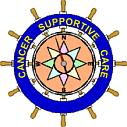|
Activities of Daily Living for Post Breast Therapy Judy Bray, OC and Mary Godfrey, OTR |
Specific daily living and self-care skills should be incorporated into your exercise program. Your goal is to resume your normal way of life by gaining progressive independence in daily personal care, household responsibilities, work, active hobbies and sports. You can help yourself reach that goal by steadily increasing your range of motion, strengthening your muscles and decreasing pain and swelling. Initially, you may need to adapt some tasks to your level of active motion and comfort. Pace yourself to accomplish a task, and then work on gradually increasing your strength and range of motion. The most difficult daily living activities will be those requiring you to reach up, out and around (especially a two-handed task).
The following suggestions will help you cope with activities of daily living; you can also use them to gradually increase your range of motion and muscle strength.
- Continue to use both hands as you did before the mastectomy. It is often tempting to avoid using a sore limb. To encourage yourself to use your sore arm, wear a cotton glove on your opposite hand to decrease its ability to feel accurately. If you have had surgery on the left side, wear the glove on your right hand. If you have had surgery on the right side, wear the glove on your left hand.
- Towel drying with both hands after bathing will help you increase your range of motion.
- When blow-drying and styling your hair, it may be more comfortable initially to support the affected arm on a telephone book or other prop until range of motion and strength have been restored.
- To fasten a bra, begin by fastening it in front and then turning it around. Progress to reaching behind your back to fasten it, first with straps off, then with straps on your shoulders.
- When putting on a blouse, shirt or sweater, put the affected arm in first. When undressing, take the affected arm out last. To remove slip-on clothing, draw it over your head first, and then slide it off your arms.
- When closing a zipper at the back of a garment, use a zipper pulley. As you achieve more active arm motion, you can discontinue using the pulley. Hanging up clothes in a closet provides you with movement similar to that obtained when using a pulley. Begin by hanging up a lightweight garment using your affected arm. As you gain strength and range of motion, try hanging up heavier garments, such as slacks or a coat.
- When cooking, do the stirring with your affected arm. At first you may prefer to slide rather than lift cookware off the stove or counter; try lifting and reaching, using both hands, as soon as you are able.
- Plan your marketing to eliminate heavy lifting or carrying.
- General household activities you may use as exercises to increase your range of motion include sweeping; making the bed; mopping; polishing mirrors, silver, etc.; turning doorknobs and keys; folding laundry; washing walls and windows; vacuuming, and reaching up to high shelves.
- When watering plants, use both hands to hold the watering can. As your strength increases, try using your affected arm, especially for watering plants in high spots.
- Gardening offers many opportunities to help you increase your range of motion, such as raking, hoeing, cutting and planting. Caution: Wear gloves to avoid cuts or injuries to your hands or fingers, because your affected arm is more susceptible to infection after surgery.
- Sports that offer more vigorous exercise, such as swimming, tennis, bowling and ping-pong, may be attempted when you have already achieved a good range of motion. Remember to reach up, out and around.
- Supportive Cancer Care
- by Ernest H. Rosenbaum, MD & Isadora R. Rosenbaum, MA
- Cancer Supportive Care Website Module s | Home | Search Our Website | Site Map | Contact Us | Top
- Cancer Supportive Care Website | Phone : 510-649-8177 | Fax: 510-649-8276
